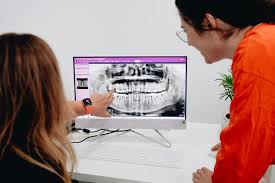Welcome to your go-to guide for delving into the world of Cone Beam Computed Tomography (CBCT), with a special focus on understanding CBCT radiation dose. This comprehensive overview brings to light the nitty-gritty of radiation doses associated with CBCT scans.
Whether you're simply fueling your curiosity or deepening your knowledge on the topic, this article has got you covered. Here, you'll uncover what CBCT is, how its radiation dose measures up and practical insights that bring clarity to this complex subject. Let's embark on this enlightening journey together!
What is CBCT Radiation Dose and Why Should You Care?

In the realm of medical imaging, the term “CBCT radiation dose” is gaining increasing attention. But what exactly does it mean?
Cone Beam Computed Tomography (CBCT) is a cutting-edge imaging technology that provides high-resolution, 3D images of the body, particularly useful in the fields of dentistry, orthopedics, and ENT. The term “CBCT radiation dose” refers to the amount of radiation a person is exposed to during a CBCT scan.
Understanding this dose is crucial because, like all forms of medical radiation, it carries a risk. However, when used responsibly, the benefits of a CBCT scan often outweigh the risks. Being informed about CBCT radiation dose helps individuals make educated decisions regarding their health care, emphasizing the importance of balancing diagnostic precision with safety.
Breaking Down the Radiation Dose of CBCT: What the Numbers Say
When we talk about the radiation dose of CBCT, we're venturing into a topic filled with numbers and units, but let's simplify it.
The dose is usually measured in millisieverts (mSv), a standard unit that quantifies the amount of radiation absorbed by the body. Typically, the radiation dose from a CBCT scan varies widely depending on the specific examination but is generally considered lower than that of conventional CT scans.
To put it into perspective, a dental CBCT scan might range from 0.005 to 0.2 mSv, showing a considerable variation based on the scan's extent and the machine's settings. Understanding these numbers helps shed light on the actual risk versus benefit ratio of undergoing a CBCT scan, allowing for a more informed decision-making process regarding your health.
CBCT Radiation Dose (msv): Understanding the Measurement

The measurement of CBCT radiation dose in millisieverts (msv) might seem like a daunting aspect of medical technology, but its understanding is key to demystifying the process. Millisieverts provide a universal metric for comparing the biological impact of different types of radiation exposure, not just CBCT scans.
For example, background radiation—the amount of natural radiation we're exposed to annually—is approximately 2.4 mSv.
When comparing this figure to the typical dose received from a single CBCT scan, we begin to see the relative safety of these procedures when performed judiciously. However, it's important to remember that while the dose from one scan might be low, cumulative exposure—how much radiation you're exposed to over time—also matters. Therefore, understanding the mSv measurement helps in assessing not just the immediate, but also the long-term implications of radiation exposure from CBCT scans.
How Does the CBCT Radiation Dose msv Compare to Other Imaging Techniques?
When placed side by side with other diagnostic tools, the CBCT radiation dose msv presents an interesting case of balance between detail and dose. For instance, traditional CT scans, renowned for their detailed imagery, typically involve a higher radiation dose, ranging from about 2 mSv to 10 mSv or more, depending on the type of scan and the area covered.
On the other hand, standard dental x-rays expose patients to a fraction of this dose, but with a trade-off in the quality and scope of the images obtained. CBCT slots in between these two, offering detailed 3D images at doses often significantly lower than a full-body CT scan but higher than your typical dental x-ray.
This comparison articulates the nuanced position of CBCT, highlighting its utility in providing high-quality imaging with a more measured approach to radiation exposure.
Minimizing Risks: Tips for Lowering Your Exposure to CBCT Radiation

Understanding the potential risks associated with radiation from medical imaging leads to the natural question of how to minimize those risks without compromising healthcare.
Here are practical tips to lower your exposure to CBCT radiation: Firstly, ask your healthcare provider about the necessity of the scan and if alternative, lower-radiation options are suitable. Secondly, ensure that the facility performing the CBCT scan uses techniques and settings adjusted to the lowest radiation dose possible for the required diagnostic quality. Thirdly, maintain a record of your imaging history to avoid unnecessary repetitions of scans.
Additionally, for professionals involved in performing these scans, staying informed about and implementing the latest radiation safety guidelines and technologies can significantly mitigate exposure risks for patients. By taking these active steps, individuals can significantly reduce their exposure to CBCT radiation while still benefiting from its diagnostic capabilities.
